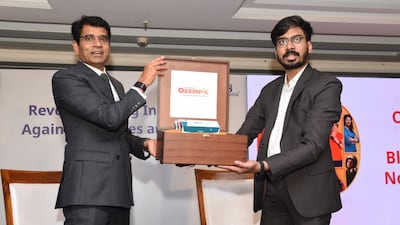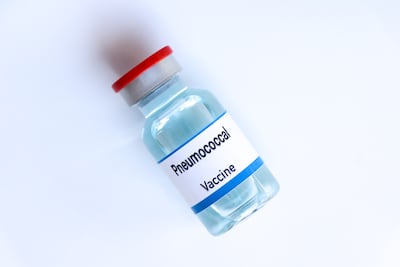Focus On Asia
Despite recent setbacks in the field, big pharma still appears to have faith in the tau approach to Alzheimer's, as evidenced by Sanofi's new $1bn-plus deal with Korean venture ADEL for an early stage candidate.
Clinical Data Readout: As a worldwide first mover, InnoCare’s BTK inhibitor orelabrutinib has hit its monotherapy primary endpoint of SRI-4 response rate at 48 weeks in a China-only Phase IIb trial in systemic lupus erythematosus.
Ozempic debuts in India, priced in the ‘affordable zone’ for the country's population, with Novo Nordisk hoping the blockbuster drug can hold its own post impending loss of exclusivity in the country next year.
Lupeng's BTK inhibitor rocbrutinib has shown an 80.0% ORR in a Phase I trial in patients who had received a covalent or non-covalent BTK inhibitor plus BCL-2 inhibitor, setting the stage for a comparative trial, possibly with Jaypirca.
Scrip's APAC team selects notable quotes from recent interviews, conferences and other coverage to highlight the views of senior executives and officials on major topics facing the biopharma sector in the region and more widely.
To develop bispecific, dual-payload antibody-drug conjugates, Phrontline Biopharma’s strategy is to tune the activity of each payload to a similar level and engineer both toxins to fit within a branched linker, its CEO tells Scrip in an interview.
InnoCare talks to Scrip about the plans and potential benefits for its BCL2 inhibitor mesutoclax in mantle cell lymphoma and beyond as it presents new results at ASH, as BeOne’s contender sonrontoclax also moves ahead in the same indication.
The consolidation of Biocon-BBL is expected to unlock value, deliver operational synergies and provides BBL’s minority shareholders an 'earlier liquidity event'. Investor Viatris also signals accelerated expiration of biosimilars non-compete restrictions.
Hanmi Pharm Group announces new mid-term strategy including expansion of its obesity focus to aging with goal of more than doubling revenue by 2030 and becoming a true global player.
Plus deals involving Simcere/Vigonvita, Formosa/Rxilient, Shionogi/Japan Tobacco, Taiho/NEC/JFCR, Toray/Sanodyne, SK Biopharmaceuticals/WARF, BioCorteX/CD Biopharma, ToolGen/GenEditBio and Actimed/Mankind.
Sun launches tildrakizumab, its star psoriasis therapy in India seven years after US FDA approval at what’s seen as a carefully calibrated price point. Can it ruffle entrenched products like secukinumab?
In the head-to-head Phase III HARMONY trial in metformin-failed type 2 diabetes, HighTide's HTD1801 yielded a mean 1.12% reduction in HbA1c from baseline at 24 weeks, versus 0.93% for AstraZeneca’s Farxiga.
Akeso’s first-in-class PD-1/VEG-F bispecific ivonescimab is a landmark achievement for China’s biotech sector, but the firm is already expanding its ambitions in oncology and beyond, including a challenge to Roche in Alzheimer’s.
After AI’s magic wand status, it's now come to Google and Open AI CEOs talking of the likelihood of a bubble burst. In this interview, Parexel’s India head discusses how to view returns on such investments, the CRO’s own use cases and the US FDA’s keenness on transparency and open dialogue.
Following US approval of its first-in-class drug for IgAN sibeprelimab, Otsuka is planning an sNDA for an autoinjector in 2026 and is in talks with regulatory authorities in Japan and Europe.
Biological E joins the ranks of Pfizer, GSK and Serum with WHO prequalification for its pneumococcal vaccine. As WHO's purchase data for Serum’s PSV10 indicate significant opportunity, Scrip spoke to Biological E on supply readiness and its application for exemption from price control in India
The success of AimedBio’s IPO may indicate investors are returning to the South Korean biopharma sector amid a series of large global out-licensing deals by domestic ventures and the strong performance of some recent biotech debutants on Kosdaq.
CRDMOs, CDMOs and GCCs are driving partnering and invigorating the wider ecosystem as India moves up the innovation value chain. CRDMOs are moving well beyond traditional outsourcing roles, a new report shows.
Hanmi is acquiring the Toronto-based biotech, Aptose, following positive early data of its lead asset tuspetinib in AML. The deal also gives Hanmi a strategic foothold in North America and marks another oncology-focused acquisition by a Korean pharma firm.
Plus deals involving Adagene/Third Arc, Celltrion/TRiOar, Celltrion/Kaigene, ImmunoScape/Cue, Laekna/Qilu, Lilly/ABL, Lilly/Sanegene, Sanyou/ZJ Bio-Tech, TransThera/Neurocrine, Qyuns/Roche, Otsuka/4D Molecular, IASO/GC Cell, Chugai/Renalys, Henlius/Forlong and Teijin/Elevara.



















